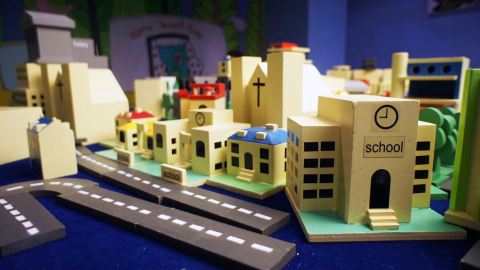Designing Tomorrow’s Ageless Community

Place matters, and it may matter more in older age than at any other stage of life. Where we live shapes the contours of our daily experience, determining our access to the things we want and need in our lives. In old age, when transportation can become a challenge, proximity to those things is more important than ever, and that’s especially true when you include your community among those needs. In retirement, the people around you can be the difference-maker that allows you to fully leverage those three-plus decades after full-time work for an active, engaging life.
Global aging has given planners and real estate developers a new challenge: how to create communities that are age-ready. What’s new about this challenge? After all, there have always been older people, and there are certainly already plenty of “retirement communities” and senior housing options. The disruptiveness of the world’s rapidly aging demographics is not just about the increasing number of older people, however. It is about a population that has new expectations for old age — expectations that will determine how, where, and among whom tomorrow’s older adults will chose to live.
More than any preceding generation, the baby boomers and Gen X have had nearly every aspect of life redesigned to improve each of their life stages. Schools had to be built and designed specifically to accommodate their numbers and interests. Homes were redesigned and made larger to accommodate their growing families, while indulging the desire of many boomer and Gen X parents for a larger “master” bedroom. Even automobiles were rethought to make life easier. The minivan, for instance, is a lifestyle vehicle built to accommodate multitasking lives that involve work, shopping, kids, and home ownership. Throughout their lives, tomorrow’s retirees have experienced design, technology, and service innovations that have consistently provided transformative improvements in lived experience. Don’t assume they’ll expect anything less in older age. The next generation to retire will demand significant improvements on the homes, communities, and lifestyles that its parents experienced in retirement.
The sheer size of the next retiree cohort will certainly drive sales in “active aging developments” and senior housing options, but it is unclear as to whether today’s 50-plus communities or senior housing options will tap the full market potential of the largest generation ever to retire. This cohort will expect homes that are convenient, yet able to provide homecare across their lifespans; communities that are accessible and supportive, yet stimulating and engaging; and activities and services that provide what is needed, as well as experiences that can excite and delight.
My recent article, Mapping the Community of the Future, provides a conceptual, fun, and slightly provocative interactive map of a future community that is age-ready and ageless because it is designed to be exciting for everyone across the lifespan. This hypothetical community is designed around four age-ready livable community principles, which I have dubbed “AIDA.” These include:
Activities that are both needed (e.g., health care, food shopping, maybe a repair depot for your home’s robot) as well as desired (e.g., dining out on occasion) are a key component of the age-ready community of the future. More than just golf courses, there are places to garden and hike, intergenerational learning centers, 3D-printing outlets, even a Teflon four-season skating rink.
Intensity relates to the verve of the community. There is enough diversity of places and experiences to excite, delight, and engage residents every day, such as a four-season farmers market and plenty of places for critical foods such as ice cream. Moreover, retirement does not necessarily mean a complete absence of work; it may mean part-time work, a new career, or volunteering. Intergenerational workplaces that facilitate continuing contribution, learning, and mentoring are an added feature to the landscape and lifestyle.
Density ensures that activities, housing, and services are all within easy reach via walking, biking, or a personal neighborhood electric vehicle provided by the local mobility-sharing services. Housing options are integrated throughout and include smaller single-family homes as well as multifamily affordable options, all near green spaces that encourage exercise, walking, and the chance to meet a friend.
Accessibility has two faces in the community of the future — physical and digital. Accessible transportation is throughout, ensuring mobility by tram, bike, foot, or scooter. Plenty of benches provide opportunities to rest during a leisurely walk, as well as a chance to chat with friends. However, in the age of on-demand services and the Internet of Things, accessibility also includes the integration of sharing and on-demand services that might include home care or healthcare. Delivery of packages may be picked up at any one of several drone-drop areas that are positioned throughout, making it possible to zone the drone traffic while forcing people to walk out into the community rather than stay in and wait for the ‘bot at the door.
The community of the future map is certainly not a complete vision. It is meant to provoke lifestyle questions, design concepts, technology assumptions, and investment choices. With any luck, it will challenge readers to think creatively about how and where they want to live tomorrow. Moreover, it might just show that communities designed well are communities for everyone of every age.
MIT AgeLab’s Luke Yoquinto contributed to this article.
Image from Shutterstock





